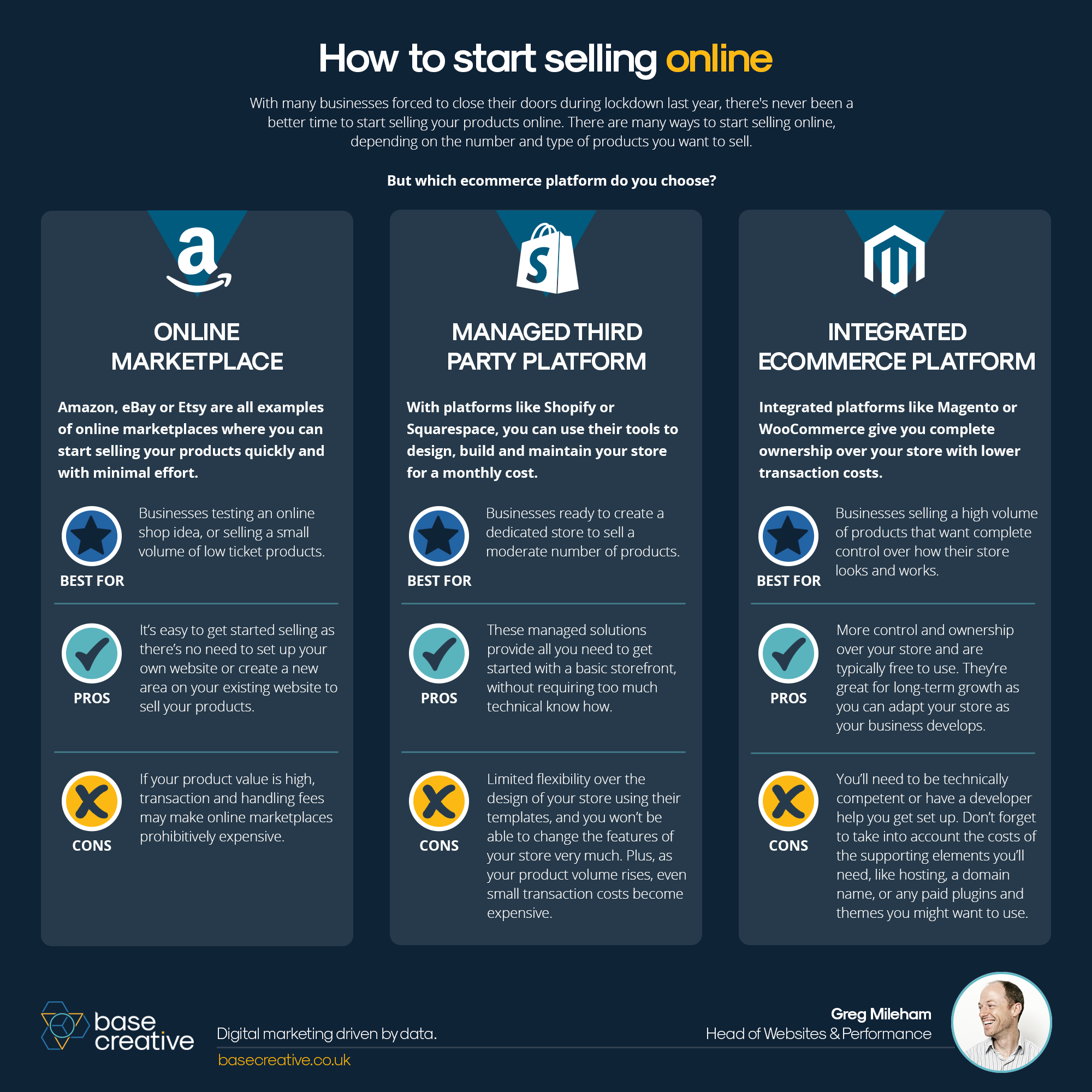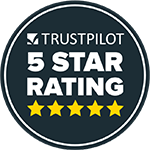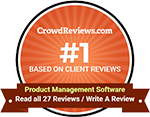How to Build Headless Commerce Website - Step by Step
This article will analyze the cost of building a headless commerce and why you should hire a headless commerce agency to implement your project. In addition, we also provide a headless development process that you can refer to for your project.
- By
- 1209 views
- 0 reply
TABLE OF CONTENTS
"I Knew My Store Could Do Better...
But I Didn't Know How"
That's what one of our clients, Jessica, told us. She was running a small mug store on WooCommerce—sales were okay, but stuck.
Until she discovered personalization.
Until she discovered Cmsmart.
Fast-forward 30 days:
- ✅ Her store was redesigned with AI product options
- ✅ Customers could design their own mugs with 3D preview
- ✅ AOV jumped by 42% — and she finally felt in control
Want to learn how she did it (and how you can too)?
🎓 Join our FREE 30-Day Email Course:
"Personalize, Launch & Scale – The Smart Ecommerce Way"
You'll get:
- ✔ 1 lesson a day, straight to your inbox
- ✔ Real store examples, demos & playbooks
- ✔ No tech jargon. Just strategy that works.
Join thousands of store owners learning how to scale smarter.
🎉 You're In! Thank You!
We've received your information and you're now part of our smart ecommerce journey.
Please check your inbox – your first email from the 30-Day Course is on its way!
📩 Didn't see it? Check your spam or promotions tab and mark us as safe.
We're excited to help you personalize, launch, and scale your store – the smart way.
TABLE OF CONTENTS
Related Post
Did you know that eCommerce sales are projected to reach a staggering $8 trillion by 2027? In a world where high transaction fees and limited flexibility can cripple potential...
Imagine doubling your conversion rates simply by understanding and implementing the latest trends in eCommerce - sounds exciting, right? In a 2022 report, it was highlighted that the global...
Introduction: The Power of Custom Stickers for SMEs In today’s dynamic ecommerce landscape, custom stickers have emerged as a powerful tool for small and medium-sized enterprises (SMEs) to stand out,...
Other Usefull Contents
You can see many success stories from our customers, and you may be one of them in the future












Headless is considered a new breeze in the e-commerce industry. Thanks to its outstanding advantages, Headless has become the preferred website model in e-commerce development. Many businesses like Lancome, BMW, and Nike have succeeded in converting their websites to the Headless model.
In the previous article, we introduced the concept of headless as well as its benefits. Following on from the previous section, this article will analyze the cost of building a headless commerce and why you should hire a headless commerce agency to implement your project. In addition, we also provide a headless development process that you can refer to for your project.
Why Should You Hire A Headless Development Agency?
Headless commerce is typical of a different structure compared to normal websites. Frontend and backend of Headless commerce are developed separately and connected through API. Also thanks to this feature, Headless commerce has many outstanding advantages. However, developing a website according to the headless model is somewhat complicated because of the different structures. That is the reason that most businesses choose to use development services from suppliers.
Improve Performance
Experts with extensive experience in headless development can help you solve problems faster. Besides, they also act as consultants to advise on building your website development strategy. Your project will be guaranteed to meet the schedule as well as ensure quality.
Time To Market
Building a headless e-commerce website is not a simple task. However, agencies often have support teams with professional members that will help you complete the project much sooner than building your own. With experience as well as knowledge, they know how to solve problems in a short time. That way you can also launch your project soon.
Outstanding From Competitors
Working with a headless e-commerce development agency can also help you to stay ahead of the competition. With a headless commerce solution, you can quickly implement new technologies and innovations, as they become available. This can help you to stay ahead of the curve and deliver a cutting-edge shopping experience to your customers.
Secure And Reliable
Finally, working with a headless e-commerce development agency can help you to ensure that your solution is secure and reliable. A headless commerce solution is typically built using modern, certain technologies, and a good development agency will have experience implementing security solutions for their clients. This can help you to protect your customers' data and ensure that your solution is always available and functioning optimally.
Overall, there are several benefits to working with a headless e-commerce development agency for your next project. With a headless commerce solution, you can enjoy increased flexibility and scalability, improved performance, a more seamless omnichannel experience, the ability to stay ahead of the competition, and a secure, reliable solution. Whether you are looking to improve your existing e-commerce platform or to build a new solution from scratch, working with a headless e-commerce development agency can help you to achieve your goals and deliver a superior shopping experience to your customers.
The Ultimate Guide to Custom Ecommerce Website Development
Guide To Success in B2B E-commerce Development
How Much Does A Headless Commerce Project Cost?
The cost of hiring a headless e-commerce development agency will depend on a variety of factors, including the complexity of the project, the expertise and experience of the development team, the tools and technologies being used, and the level of customization required. On average, the cost of headless e-commerce development can range from $10,000 to $200,000 or more, with projects on the higher end of this spectrum typically involving more complex requirements and more experienced development teams.
One factor that will impact the cost of headless e-commerce development is the complexity of the project. The more complex the project, the higher the cost will be, as it will require more time and resources to develop.
Another factor that will impact the cost of headless e-commerce development is the expertise and experience of the development team. Teams with more experience and expertise will typically charge more for their services, as they have a deeper understanding of the tools and technologies involved and can deliver higher quality work more efficiently. If you require a more experienced development team, you can expect to pay a higher rate for their services.
The tools and technologies being used will also impact the cost of headless e-commerce development. Some technologies may require additional licensing fees or be more difficult to work with, which can drive up the cost. Additionally, the choice of technology will impact the development timeline, as some technologies may be faster to develop than others. For example, a development team experienced in working with a particular technology may be able to deliver a project in a shorter timeframe, which will lower the overall cost.
Finally, ongoing maintenance and support will also impact the overall cost of the headless e-commerce solution. Maintenance and support will be required to keep the solution up-to-date and functioning optimally, and the cost of these services will depend on the level of support required and the frequency of updates.
The cost of hiring a headless e-commerce development agency can vary widely depending on several factors, including the complexity of the project, the expertise and experience of the development team, the tools and technologies being used, and the level of customization required. It's important to consider all of these factors when determining the cost of a headless e-commerce project and to work with an experienced development team to ensure that you get the best possible solution for your business needs.
Step-by-Step Guide To Develop A Headless Commerce Website
Headless E-commerce Website Planning And Requirements Gathering
Define Business Goals
Before diving into the development process, defining your business goals and objectives for the headless commerce website is crucial. Consider factors such as target audience, product offerings, competitive landscape, and desired user experience.
Identify Functional Requirements
Based on your business goals, identify the core functionalities your website should have. This may include features like product browsing, search functionality, shopping cart, user authentication, payment processing, order management, and more. Create a list of these functional requirements.
Analyze Technical Requirements
Next, analyze the technical requirements needed to support the identified functionalities. Consider factors such as hosting infrastructure, scalability, security, performance, integrations with third-party services (e.g., payment gateways), and content management.
Create A Project Roadmap
Based on the identified business and technical requirements, create a project roadmap that outlines the key milestones, deliverables, and timeline for the development process. This roadmap will serve as a guiding document throughout the project.
Setting Up The Development Environment
Backend Environment
Frontend Environment
Version Control
Designing The User Interface
Information Architecture
Define a clear information architecture that organizes your website's content and establishes a logical structure. Consider the hierarchy of pages, categories, and subcategories. Identify key touchpoints where users will interact with the website.
Wireframing And Prototyping
Create low-fidelity wireframes to outline the basic layout and structure of each page. Once the wireframes are finalized, create high-fidelity prototypes using design tools.
Visual Design
Develop the visual design of your headless commerce website based on your brand guidelines and target audience preferences. Consider typography, color schemes, iconography, and other visual elements that align with your brand identity.
Responsive Design
Ensure that your website is responsive and optimized for different devices and screen sizes. Implement responsive design techniques like fluid grids, flexible images, and media queries.
Backend Development
Define API Endpoints
Identify the necessary API endpoints for handling various functionalities of your headless commerce website. This includes endpoints for product retrieval, user authentication, cart management, order processing, and more.
Implement API Endpoints
Using your chosen backend framework, create the necessary routes and controllers to handle the defined API endpoints. Implement the logic for retrieving and manipulating data from the database, integrating with third-party services, and enforcing business rules.
Authentication And Authorization
Implement user authentication and authorization mechanisms to secure your API endpoints. Use techniques like JSON Web Tokens (JWT) or OAuth for authentication and role-based access control (RBAC) for authorization.
Integrations
Integrate with third-party services, such as payment gateways or shipping providers, to enable smooth transactions and order fulfillment. Follow the documentation of the respective services to establish the necessary connections and handle API communication.
Frontend Development
Set Up Routing
Configure the routing system provided by your frontend framework to handle different URLs and map them to the corresponding components. Define routes for pages like product listings, product details, cart, checkout, and user authentication.
Build Components
Break down your UI into reusable components that represent different parts of your website. Create components for headers, footers, navigation menus, product cards, search bars, forms, and other UI elements. Ensure these components are modular, maintainable, and follow best practices.
Connect To Backend APIs
Use libraries like Axios or Fetch to make HTTP requests from your frontend application to the backend API endpoints. Implement the necessary logic to fetch data and update the UI based on the API responses.
Implement State Management
Choose a state management solution like Redux, MobX, or React Context API to manage application-level state. Implement the necessary actions, reducers, and selectors to handle data flow and maintain a consistent state throughout the application.
Implement User Authentication
Create authentication components and workflows to allow users to sign up, log in, and log out. Use tokens or session management techniques to persist user sessions and handle authenticated routes.
Handle Forms And Validation
Implement form components and utilize form validation libraries to ensure data integrity and provide a seamless user experience. Validate user input on both the front end and back end to prevent malicious or invalid data.
Integrate With Payment Gateways
If your headless commerce website involves processing payments, integrate with payment gateways like Stripe, PayPal, or Braintree. Follow their documentation to implement payment processing and handle secure transactions.
Testing And Quality Assurance
Unit Testing
Implement unit tests to verify the individual functions and components of your codebase. Use testing frameworks like Jest, Mocha, or Jasmine to create test cases and assertions. Aim for good test coverage to ensure code reliability.
Integration Testing
Perform integration testing to verify the interaction between different components and modules. Test API integrations, data flow, and overall system behavior. Utilize tools like Cypress, Selenium, or Puppeteer for automated browser testing.
User Acceptance Testing
Involve real users or testers to perform user acceptance testing. Collect feedback, identify usability issues, and make necessary improvements based on user insights.
Performance Optimization
Optimize your website's performance by implementing techniques like code minification, bundling, lazy loading, caching, and image optimization. Use performance monitoring tools to identify bottlenecks and improve loading times.
Security Audit
Perform security audits to identify and fix potential vulnerabilities. Protect user data, implement proper encryption, and follow best practices to prevent common security threats like cross-site scripting (XSS) or SQL injection.
Deployment And Maintenance
Build And Deployment Process
Set up a build process to compile and bundle your front-end code for production. Use tools like Webpack or Babel to optimize and transform your code. Configure deployment scripts to automate the deployment process.
Hosting And Server Configuration
Choose a hosting provider that meets your scalability and performance requirements. Configure the hosting environment, including server setup, security measures, and SSL certificates. Ensure that your backend APIs are properly configured and accessible.
Continuous Integration And Deployment (CI/CD)
Implement a CI/CD pipeline to automate the build, testing, and deployment processes. Utilize tools like Jenkins, GitLab CI/CD, or CircleCI to set up continuous integration and automatic deployments.
Monitor And Maintain
Monitor the performance and stability of your headless commerce website. Use monitoring tools to track metrics like response time, server load, and error rates. Perform regular maintenance tasks, such as database backups, security patches, and system updates.
Headless Commerce Successful Examples
Nike
Nike is one of the fashion brands at the forefront of new technology approaches to improve the customer experience. New to the mobile-first orientation, Nike quickly realized that they needed an outstanding improvement solution for their website. Most websites when operated on mobile devices are not as good as they are on computers. Headless is seen as the best solution that can help Nike solve their problem: improve website performance on mobile devices and improve customer experience.
This strategy has helped Nike surpass Adidas in holding the online retail market share of the fashion industry. Along with that, Nike's website recorded more than 60 million pageviews in just 1 month.
Target
Similar to Amazon and eBay, Target is also one of the major online retailers in the US. However, unlike the rest of the e-commerce platforms, Target has a large chain of stores stretching across the United States. To attract users to buy online, the target quickly approached the campaign to convert its existing website to a headless commerce model. The Headless model allows Target to synchronize data to optimize the overall customer experience. Users can view products on one device and checkout on another. As a result, Tarrget's order conversion rate is superior to that of the previous time.
Lancôme
Lancôme is one of the high-end French cosmetic brands, so most of the factors that can affect the quality of services are paid special attention by Lancôme. Website is one of them.
Lancôme is also one of the first cosmetic brands to pioneer in converting websites to a headless model. Don't disappoint anyone. The headless commerce model has helped Lancôme increase the conversion rate by 17% higher than before.
Under Armour
It can be said that Under Armor is one of the outstanding examples of the successful application of the headless model. Although the time Under Armor started applying Headless, it was still very new. However, Under Armour received a lot of fruit when their revenue increased to double digits, a return rate that was three times higher, and a pre-bounce that was reduced by 65%. All because users can order on Under Armor's website quickly and easily.
Debenhams
Considered the largest department store chain in the UK with more than 2 hundred physical stores spanning many European countries such as the United Kingdom, Denmark, Ireland,... However, under the impact of the pandemic, Debenhams faced many difficulties when the trend of online shopping increases rapidly. In addition, they face the increasing cost of renting real estate.
However, the strategy of improving the website to meet the demand for online shopping saved Debenhams from the brink of collapse, even though it had previously closed 22 stores and laid off 1200 employees. Then, Debenhams saw a 40% increase in mobile revenue and another 20% increase in conversions, which in turn drove their online growth to be above market.
MultiStore E-commerce Solution: What you need to know before starting
Multi-Vendor Website Development - The Ultimate Guide 2023
Platforms Offer Headless Commerce Service
Shopify Plus
Shopify Plus is a popular platform that offers headless commerce capabilities. It provides APIs and SDKs to build customized storefronts while leveraging Shopify's robust backend for managing products, orders, and inventory.
- Pros:
- Cons:
Magento Commerce
Magento Commerce is another powerful platform that supports headless commerce. It offers extensive customization options, APIs, and a wide range of extensions. You can build your front end using modern JavaScript frameworks and connect it to the Magento backend.
- Pros:
- Cons:
BigCommerce
BigCommerce is a flexible headless commerce platform that provides APIs and tools to build custom frontends. It offers scalable hosting, built-in security features, and integrations with popular payment gateways.
- Pros:
- Cons:
Contentful
Contentful is a headless content management system (CMS) that integrates well with headless commerce platforms. It allows you to manage and deliver content to multiple channels, including your headless commerce front end. Contentful provides a user-friendly interface for content editors and powerful APIs for developers.
- Pros:
- Cons:
Are You Ready To Build Your Headless Commerce Website?
Now that you have a comprehensive understanding of the steps involved in building a headless commerce website, it's time to bring your vision to life. Whether you're a business owner, developer, or entrepreneur, creating a headless commerce website can unlock endless possibilities for your online business.
To embark on this exciting journey, consider partnering with a reputable headless development agency. Our expertise, experience, and specialized knowledge in headless architecture can ensure a smooth and successful implementation of your project.
At CMSMART, we are a leading headless development agency with a proven track record in delivering cutting-edge headless commerce solutions. Our team of experts is well-versed in the latest technologies, best practices, and industry trends. We take a collaborative approach, working closely with our clients to understand their unique needs and deliver customized solutions that drive results. Here is our process for a customized website project:
By choosing us as your headless development partner, you can benefit from:
Take the next step in your e-commerce journey by partnering with CMSMART. Contact us today to discuss your project, get a detailed cost estimate, and learn how our expertise can help you build a powerful and successful headless commerce website.
Remember, the world of headless commerce is evolving rapidly, and staying ahead of the curve can give you a competitive edge. Let us be your trusted partner in harnessing the potential of headless architecture for your online business.